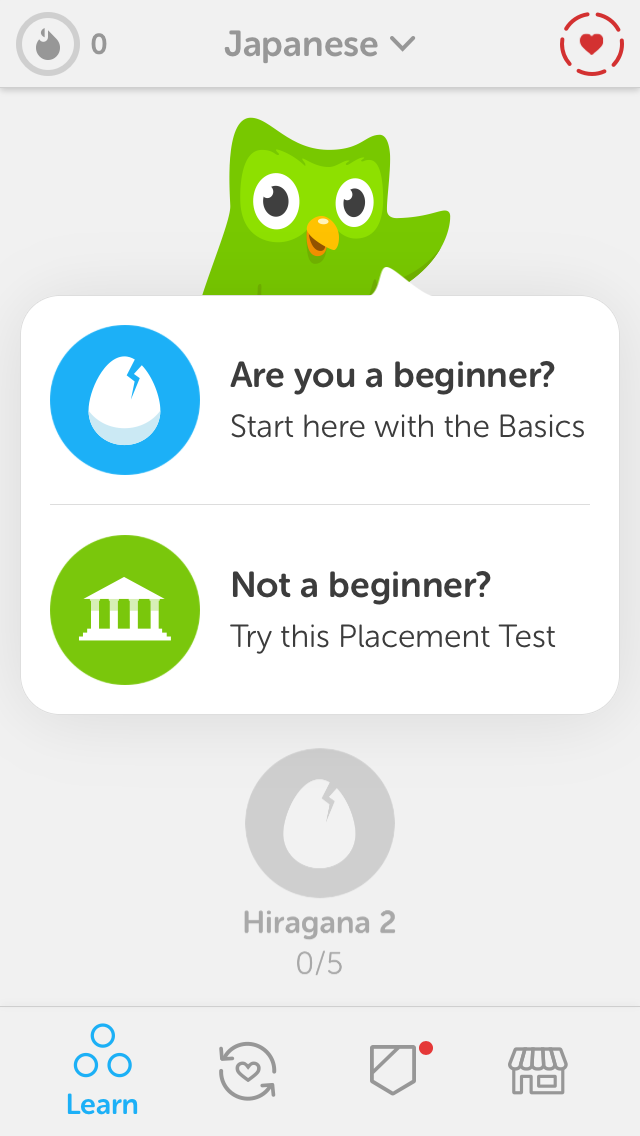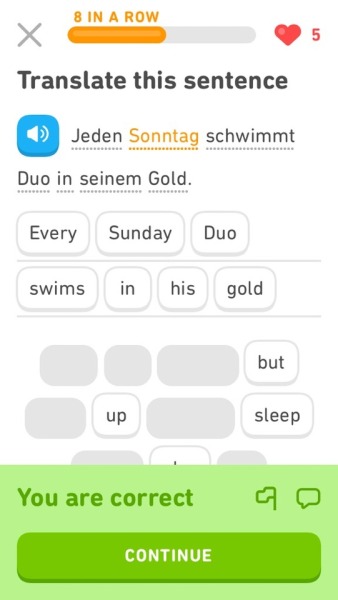
Not sure why the app doesn’t log that type of learning. This does not count time spent in vocabulary/grammar flash cards and other types of drills. Over that time period, I’ve logged 36 hours of study in new lessons and review.I’ve been using this app for 68 consecutive days.It’s available for iOS (Apple) and Android (Google) for free.īy the way, if you’re wondering things like “is Korean really hard?” or “what am I getting myself into if I take on a project like this?” I have some stats that may provide some insight. Surprise, surprise: much like Taekwondo study, it’s not very satisfying to make a half-hearted effort, but when I really throw myself into practice, I make all kinds of connections and insights that I wouldn’t if I were treating it as a chore.Īlthough I still use DuoLingo from time to time-since it seems to offer more vocabulary training, and the slightly different focus from LingoDeer is sometimes useful-I’ve switched my focus to LingoDeer and recommend it enthusiastically as a good starting point for anyone interested in learning Korean. The more I practice the more fun I have.but it also seemed to make things harder than they really needed to be.

this meant if you had the confidence to write “This chicken rides a horse” you really knew what you were doing. DuoLingo had an odd habit of making nonsensical sentences to translate. it feels like one lesson builds into the next, where in DuoLingo, I felt like concepts were often thrown together with little explanation or continuity. has a more clear and methodical method of introducing concepts.I like the self-contained portability of the app, which lets me study in short bursts whenever I’m trying to fill a few minutes in my day. has grammar tutorials built right into the app, so it’s not necessary to consult the website for explanations and context for a given lesson.I worked in both apps simultaneously for about two months and decided that I prefer LingoDeer because it: A little research led me to try LingoDeer, a lesser-known app, but one that specializes in Korean, Japanese, and Chinese.After a little over a month, I concluded that I was becoming a master of DuoLingo, but not really learning Korean: I could get question after question right without really feeling like I knew what I was doing.


This was the subject of my second blog post on learning Korean.

Having studied every day since mid-November-some days as little as 10-15 minutes, other days up to 3-4 hours-I have a number of new observations: In the ongoing saga of my efforts to learn the Korean language, I have a third installment for those who may be interested in this exciting and satisfying cultural journey.


 0 kommentar(er)
0 kommentar(er)
